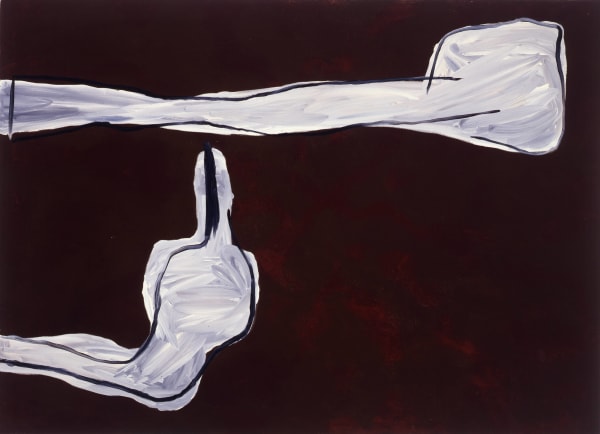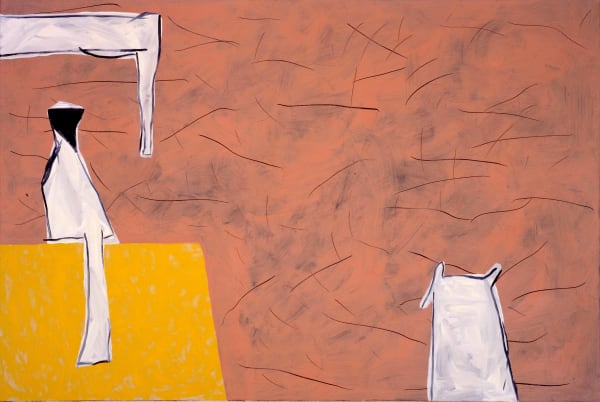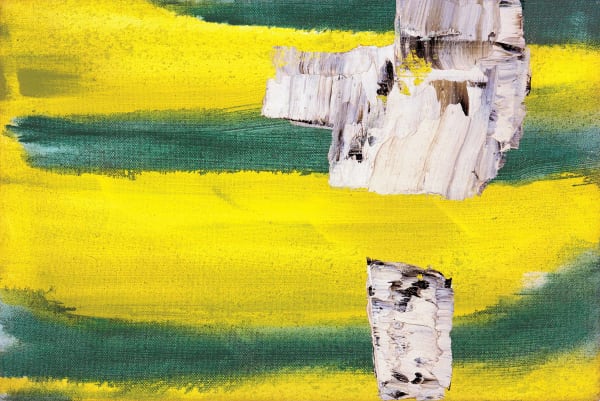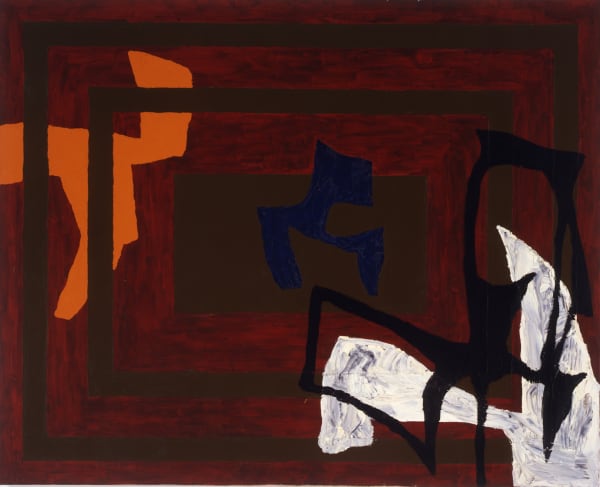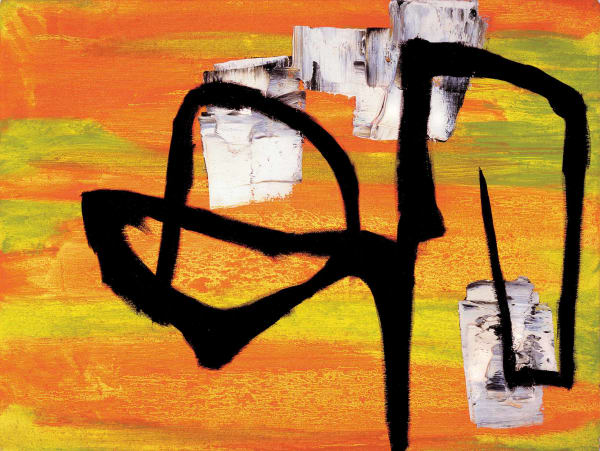Jonathan Lasker: Early Works
Archive exhibition
-
OverviewCheim & Read is pleased to present an exhibition of early work by New York painter Jonathan Lasker. The show groups together twenty seminal paintings, dating from 1977–1985, which attest to the origins of Lasker’s methodology, and ideas about abstraction, figuration and language. His consistent, critical questioning of the painting medium, which began with this early work, continues to influence his artistic practice today. The current exhibition will be accompanied by a full-color catalogue with an essay by Robert Hobbs.
Lasker was born in Jersey City, New Jersey, in 1948. After attending Queens College and the School of Visual Arts in New York, he enrolled in CalArts, in Valencia, California, in the late 1970s. His time at CalArts, which coincided with the school’s heyday of Conceptualism, became an important determining factor on his work. Committed to painting and its history, Lasker defended his chosen medium against a critical audience of teachers and fellow students, most of whom dismissed painting as “dead” in a post-modern era. CalArt’s Conceptualism challenged Lasker to rethink painting’s significance and “progression,” thus strengthening his arguments. He adhered to the rigorous critical discourse of his peers but re-positioned it for a different end, ultimately exposing the unique dialectic inherent to painting: its objecthood versus that which it represents. Both physical and illusionist, literal and figurative, dimensional and flat, painting’s contradictory elements have provided Lasker with continually rich territory.
Rejecting affiliation with modernism, Lasker intentionally moved away from the self-referential, autonomous work of art and toward the realm of the populist, where high and low intertwine, decoration and pattern invade, and figuration mingles with abstraction. Hierarchies are reduced: foregrounds and backgrounds (and positive/negative forms) compete for spatial resonance, while at the same time each is understood as its own “visual language.” Most distinctive in Lasker’s work are ambiguous but evocative abstracted motifs, sometimes repeated in several compositions, with which he creates a vocabulary of “clues.” Lasker avoids reference to narratives or recognizable forms; he associates the motifs with “jigsaw puzzle” pieces or “image kits” from which the viewer must draw his own conclusions. As Hobbs points out in his essay, this echoes CalArts Conceptualist John Baldessari, whose Blasted Allegories (1978) shifted responsibility for the image’s meaning to the viewer, thus separating art and artist. Lasker’s early work exposes the viewer’s innate search for self-referential meaning, even with limited information, and further reveals the artifice of painting. As he tells Hobbs: “The problem concerns how much of the picture a viewer can receive and still be aware of the painting as a literal object.”
Lasker’s positioning of contradictory elements (thick/thin, brushed/troweled, gestural/flat, unconscious/conscious) through his use of three elementary essentials—figure, ground and line—challenge more traditional readings of non-representational painting. The early paintings presented in this exhibition reveal the formation of Lasker’s artistic approach, especially in regards to the ways in which paintings are constructed and perceived. He has said (quoted in Hobbs’s essay): “In my mind I’m still making the painting from 1977-80.” Recognizing the context in which these works were made—when attitudes towards painting were less than enthusiastic—makes them that much more notable for their incisiveness and originality. It also confirms Lasker’s influence on subsequent painters, and the true commitment he has to the medium.
Catalogue with text by Robert Hobbs will be available. -
Selected Works
-
Publications
No publications are available relating to this exhibition.
-
News
-
Artists




